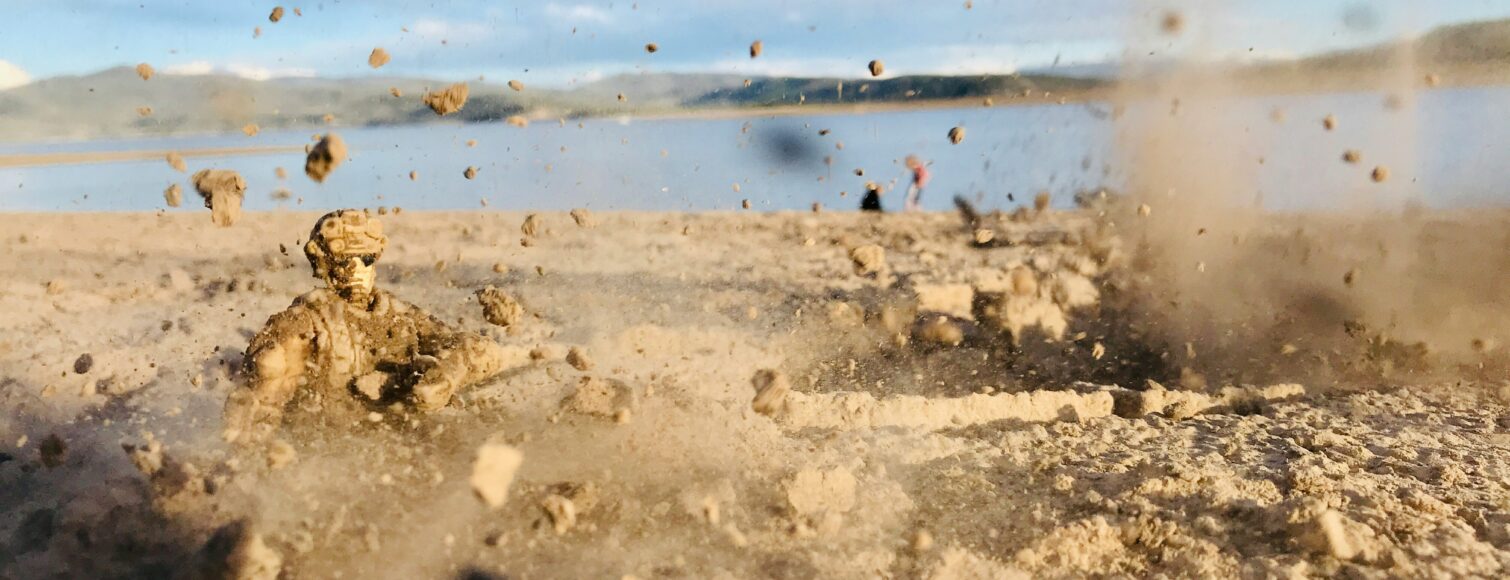Some things you shouldn’t have to see. But once you have, you can never unsee them.
In the early months of Russia’s invasion of Ukraine, I saw footage filmed by drones. It’s been over three years now—those drones feel like they belonged to a thousand generations ago. Still, I saw bodies shatter into pieces under precisely dropped mini-bombs. I saw soldiers begging the camera for mercy. I saw others shot point-blank after surrendering.
But what did I actually see?
In 1991, the French philosopher Jean Baudrillard wrote that the Gulf War never took place. He didn’t mean that there was no fighting or death, but that for us, as spectators, the war had dissolved into simulation. What I saw back then—still on TV—was a media event: clinical images of cruise missiles, greenish-grey dashboards, and vague night vision footage. Sometimes we caught glimpses of tiny dots fleeing for their lives far below. But they looked more like pixels, extras at best.
The Gulf War was a spectacle: sanitized and kept at a distance. It was nothing like the Vietnam War, where journalists were close to the action and the public felt the horror almost first-hand. That coverage had a profound impact on public opinion. Three decades after the Gulf War, war has taken on yet another form—not one of further abstraction, but quite the opposite. War is close again.
Thanks to cheap drones, bodycams, live feeds, and algorithmic targeting, we now get war in first-person view—as if we’re looking through the crosshairs ourselves. We no longer see the soldier as a silhouette on the horizon, but as a panting body huddled in the mud. The drone follows silently, often piloted from miles away—or even autonomously. The strike comes from above, soundless. And we watch.
On X, on Telegram, in short clips going viral on TikTok. War is back in our hands—but what exactly are we watching?
With the rise of drones, everything has changed. Not just because drones are now cheap and widely accessible, but because they are deployed in asymmetric conflicts where there is no clear front line. In Ukraine, the DJI Mavic—originally a commercial camera drone—has become a lethal weapon. You can order it online for a few hundred euros.
Houthi fighters use drones to attack Saudi oil installations. Israeli drones hover endlessly above Gaza, sometimes simply to instill fear through their constant presence. The drone is camera, weapon, and psychological torture device in one.
The “first-person war” is not just a technological innovation—it’s a media, cultural, and even existential shift. What we now see is no longer abstract strategy but the soldier’s gaze, the civilian’s panic, the drone pilot’s loneliness—or worse, his absence.
This shift has ethical consequences. If war increasingly becomes a livestream, what does that mean for our engagement? Does it make us more aware of the horror—or do we indulge in a perverse kind of empathy at a distance? Do we see victims as people, or as ‘content’?
The Ukrainian army regularly posts drone footage of successful strikes on Russian positions, often with metal music or ironic captions. Russian Telegram channels do the same. Death becomes part of the narrative—and is aestheticized. The American philosopher Donna Haraway once wrote: “Technologies are not neutral. We’re inside of what we make, and it’s inside of us.” In the case of drones: we make the machines—but they also reshape how we see war, feel it, judge it.
Baudrillard might say: now the war is really happening—but in a way that undermines his own argument. Virtuality hasn’t disappeared; it has entangled itself with bodies on the battlefield. The man who dies is no longer invisible; we see his face, hear his final words. And that changes something in us.
At the same time, the visibility drones provide is no open window onto reality. Footage from Israeli drones rarely reaches us. There’s no viral TikTok of a Palestinian family being killed from the air. The media form of drone warfare is one of selective openness: it shows exactly what those in power want us to see—and hides the rest.
So what are we watching? The media aspect of the drone may be its most powerful weapon. It not only determines who dies—but also who counts. And who is allowed to watch.
With the “first-person war” the body has returned to the screen—not as citizen or hero, but as datapoint or cautionary tale. War is happening. In brutal rawness.
But in a way that enables new forms of alienation and control.
What does this mean for a University of Technology? It’s a question that students and researchers in Delft must confront. Here, the next generation of drones is being developed—often not for military use, but sooner or later the technology ends up on the battlefield. It’s a difficult question in chaotic times, when war feels simultaneously closer and further away than ever. That’s why it’s a crucial question in our program line War and Entropy—how do we navigate in times of conflict and increasing chaos?
On Tuesday, May 6, researchers Nick Johnston and Yke Bauke Eisma will explore this very question.
Join us, and take part in the conversation.

